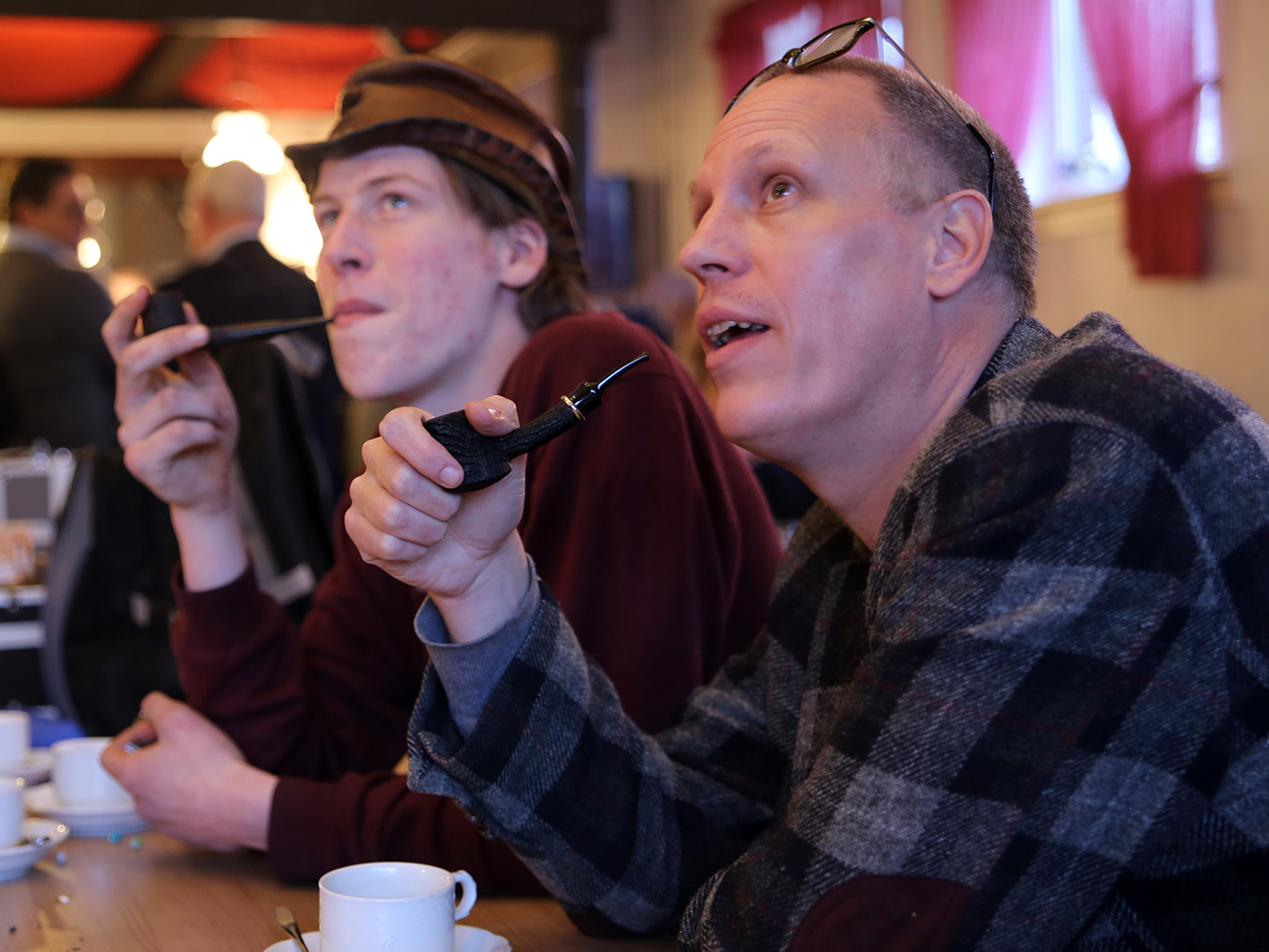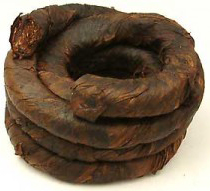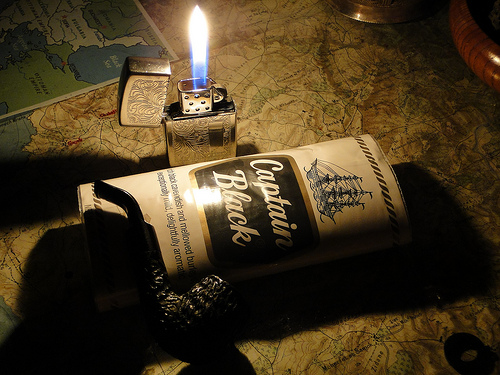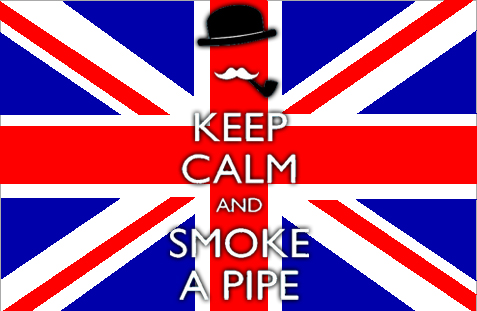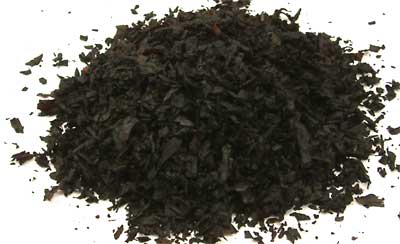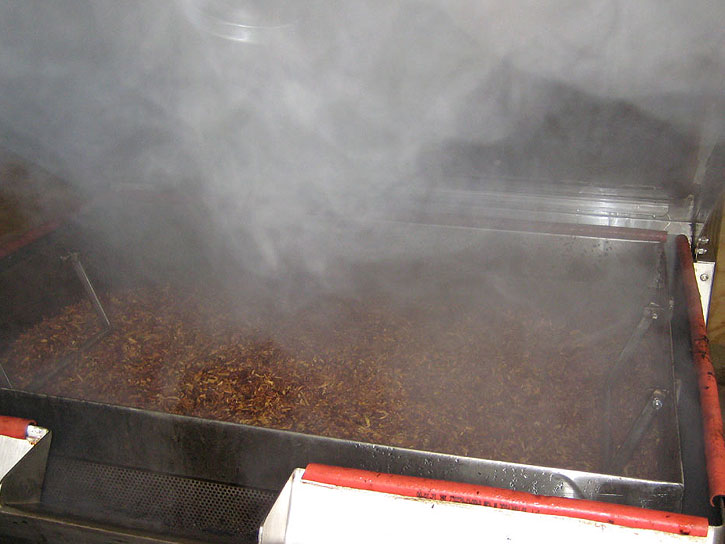September 17th it was once again time for one of my annual highlights: The Inter Tabac fair in Dortmund. For those of you who missed the blogposts I made of the visit the last couple of years; the Inter-Tabac is the leading and biggest trade fair of the world for tobacco products and smoking accessories. This year there were more than 450 exhibitors from over 60 countries who presented themselves in 5 huge exhibition halls. Renowned companies from all over the world presented trends and innovative tobacco products. This includes cigars, cigarillos, cigarettes, E-cigarettes, E-pipes, E-shishas, smoking accessories, pipes, pipe tobacco, shishas, shop equipment and spirits. Unfortunately the fair is for retailers, not for consumers.
Like the last years I was able to secure a ticket through Fred, only, some days before the fair he told me he could not make it. His daughter moved out of the parental house a little bit earlier than expected. But I could have his ticket and make someone happy with it. Easy, I thought, what pipe-smoker does not want to go to the Valhalla of smoking? So I asked some friends if they had time but one was on holiday the other did not have a car, someone else had some “things” to do with his students. I obviously did not take into account that Saturday was rather short notice for most. In the end I just asked on the Dutch/Belgian Pipe Smokers Forum who wanted to go with me. I got no more than two reactions so I decided to flip a coin. The winner was Jan, a relaxed, intelligent man with an unique view on life, who was absolutely delighted. He lives not too far away from me and I discovered the detour for me was only 2 km. So I picked him up and together we drove to Dortmund.
After a pleasant ride we arrived at the Westfalenhallen just when the doors opened. Like every time I started in hall 4. I wanted to speak with Elbert Gubbels from Big Ben because he and I have some business to do for the new Dutch/Belgian Pipe Smokers Forum tobacco. Unfortunately he was busy so we walked on to the stand of Dan Tobacco Manufacturing (DTM)/Dan Pipe where we were greeted by the lovely daughter of managing director Heiko Behrens. “Did I saw you here last year?” she asked. “Yes you did!” I said with a smile. She asked if we would like some coffee (yes please!) and sat down with us. “So, what is new at Dan Tobacco?” I asked.
She produced 3 plastic jars with in each a new blend. The first was called “Burley Maduro”, a sturdy, natural mixture of burley and some soft tasting Maduro leaf. Jan would not pack a pipe with it that “early” in the morning but I loaded up one. The taste surprised me, I expected to taste cigar but I did not. It just was a natural very mellow tobacco flavour which reminded me in the distance of the Langue de Chien variety of Semois, very pleasant. But I have to say, it packed a very healthy dose of vitamine N. The second was named “M.A. Blue Canary”. A blend of black cavendish with some gold-brown flake scraps topped with the aromas of apple, vanilla and a bit of cinnamon. The third one was called “Bill Bailey’s Country (Bourbon) Blend”. A mixture of bright US Virginias, a lot of black cavendish and a bit of deep brown dark fired Kentucky topped with Bourbon whiskey and Bourbon vanilla. We thanked Frau Behrens for her time and when we wanted to leave the (beautiful!) stand we were stopped by her old father, managing director Heiko Behrens, who thanked us for visiting. I said it before but the people at DTM are warm and passionate with the typical “no-nonsense working hard and effective” German mentality.
After visiting the stand of My Father Cigars who make my favourite “La Antiguedad” cigar Jan and I walked to another hall. There were several little pipe-smoking related stands put together where you could find names like Gabriele Pipes, Jobs Freehand Pipes, Talamona, Michal Novak, Mr. Brog, P. Jeppesen (who had some really beautiful stained blasted pipes) and… Cornell & Diehl. I especially was excited about visiting the stand of the latter, their first time on the Inter Tabac. Silently I hoped that the Dark Lord GL Pease, one of my pipe-smoking idols, would also be there. But alas, no.. Also the stand itself was quite a bit smaller than I expected, just a desk. At first I believed that in Europe their range was available at the Linzbach store in Düsseldorf. But to my surprise the friendly guy behind the desk said they had no German importer and C&D was not sold there. I later learned he was right when I visited Linzbach. However, they had an importer in the Ukraine! Uhm.. Ok.. We talked about the very worrying FDA regulations and on the lighter side about the (re)introduction of the new Drucquer blends. I asked if he had samples of those but sadly he did not. He did have a sample of one of their best aromatics, Autumn Evening, which I am smoking as I type this. Smooth and tasty!
Then we were off to the large stand of Planta and Designer Berlin (DB) pipes. Like every year Planta had a big wooden barrel standing there with in it their year tobacco, this time called Bacchus mixture. I asked Jan to put his nose near the lid when I pulled it off. He went like “whooaaaa!!!” when he smelled the blend, it was very, very sweet. We admired the many displayed pipes of DB and had to laugh when we saw a couple called “Caribbean Black Pearl”. Undoubtedly ideal for smoking Pirate Kake! Arrrrr matey!
Gradually we moved towards what I call “the Italian corner” which has pipe-brands as Savinelli, L’Anatra and Ser Jacopo. Especially some pipes of the latter boasted some stunning silver-work. Around the corner was the shared stand of Northern Briars and Samuel Gawith (Gawith & Hoggarth). I looked forward to meeting Bob Gregory because I also had some business to do with him for the new Dutch/Belgian Pipe Smokers Forum tobacco (it is made by Samuel Gawith and imported by Gubbels). I mailed Bob twice to ask if he could bring a sample of the final product with him but I heard nothing. Typical Bob, “I am 70 years old and semi-retired ok??”. As soon as he saw me he shouted with wide eyes “Go away you! Go away!” at me. But I cornered the bastard and forced him to hand over 2 tins of Flatlander Flake, which is the name of the forum tobacco. He did think of me *smiles*. His bald lackey and himself anxiously looked at me when I opened up one of the tins and smelled it. Approved! At which they both smiled (very rare for Bob). Then we exchanged some pleasantries and Bob told some funny stories about how him and Brian Levine (the PipesMagazine.com radio-show host) constantly keep insulting each other. By the way, I saw Brian already a couple of times in the hallways. First time he had a big German glass of beer with him and the second time he was on his way to a whisky-tasting..
The lunch this year was sober. The prices of food and beverages are outrageous at the Inter Tabac (€4,30 for a small bottle of cola!). So I brought brown buns with cheese on them with me and Jan had some sandwiches. Screw you expensive catering! We’re Dutch! After the lunch we walked to the stand of the Scandinavian Tobacco Group where pipes of brands like Winslow, Peterson, Butz Choquin, Stanwell and Dunhill are displayed. Soon a lady came asking if we wanted a cup of coffee (yes please!) and while we sipped that away we looked at the shown pipes. To be honest there was not much new. Butz Choquin (sorry to say but masters of bad taste) had some new awful plastic looking colourful pipes and I think that was about it. Ok, at least they try to bring something new. But it all was a bit.. Soulless.. Despite the wonderful pipes Mr. Winslow makes.
Talking about soulless, German tobacco manufacturer Kohlhase & Kopp also radiates that. They have wonderful brands in pipes and tobaccos like Rattrays, Ashton, Sillem’s, Solani and Robert McConnell but inside their large stand no one cares about you. The pipes, cigars and tobacco are nicely displayed but there is no interaction with employees. It all looks and feels a bit cold and snobbish.. However, they did have tins of the “new” Dunhill Dark Flake and Ye Olde Signe offerings. But no one around to ask for a sample. On to Vauen, they had a new pipe which looked like typical Austrian or Bavarian smoking pipes. I actually liked the model but that can be because of my love for Austria. Of course all the amazing looking Auenland pipes were prominently displayed. On the way to yet another hall we passed the Falcon stand. The guy there was a bit disappointed when he discovered we were not salesmen. Sorry, I am just a humble blogger! The loose Falcon bowls were pretty nice, but the stems looked kind of plastic-like.
We immediately noticed we entered the hall of the shishas because of the typical faintly sweet odour hanging there. Remarkable was 1. that it was the busiest hall (busier than the E-smoke one!) and 2. it contained the youngest visitors by far. Perhaps this was due to the presence of many beautiful ladies praising and demonstrating the shown wares. I admit, I was too much a coward to ask these beauties if I could take a picture of them. Luckily Jan was much braver, took my camera, asked the ladies and snapped some shots. He never smoked a shisha so we went looking for a nice place to smoke one. But it was so busy everywhere that that plan did not work out. Apparently the crazier the better goes for the world of shishas. Walking through the hallways we saw some “interesting” looking ones shaped like dildos (sadly no girl to demonstrate them..), tommy-guns and glittery kalashnikovs (for the smoking jihadist?) and gas masks.
After walking through the E-smoke hall (nothing special there for me) we tried to have a conversation with Elbert Gubbels again. But he still was too busy which I took as a good sign. So on we went to the huge stand of MacBaren. There Per Jensen, the product manager of MacBaren, recognized me. We shook hands and beside him stood a basket filled with small flashy looking round boxes. Apparently there was some kind of snus inside made by MacBaren in cooperation with another company. Per opened one and inside the box were what seemed little tea-bags filled with tobacco. I had to place one in my mouth between my cheek and gums, which I did. The first minutes it was quite enjoyable until the point the juices started flowing. My cheek began to have a burning feeling and I got the hiccups because of the vast quantities of nicotine getting into my system. I hurried to take the bag out of my mouth and was glad Per quickly arranged a refreshing glass of water. Nope, not for me this..
 The 3 of us sat down inside the stand where Per asked if we wanted a cocktail. A cocktail? Here? Well, uhm, yes please! He mentioned for a waitress to come and I ordered a Highball (never had one but it sure tasted good!) and Jan a No Sex On The Beach. Then I asked Per what was new at MacBaren. There were some new Amphora offerings which grabbed my attention because originally Amphora is a Dutch brand which was made by Douwe Egberts. Two of them (Amphora Special Reserve No. 2 and No. 8) were typical Danish aromatics, and did not pique my interest. The other one did because it was a pure Virginia, hence the name: Amphora Virginia. I really hope this blend will be on sale in The Netherlands. There are not so many pure Virginia blends left here.. Per gifted me a pouch which I will open soon.
The 3 of us sat down inside the stand where Per asked if we wanted a cocktail. A cocktail? Here? Well, uhm, yes please! He mentioned for a waitress to come and I ordered a Highball (never had one but it sure tasted good!) and Jan a No Sex On The Beach. Then I asked Per what was new at MacBaren. There were some new Amphora offerings which grabbed my attention because originally Amphora is a Dutch brand which was made by Douwe Egberts. Two of them (Amphora Special Reserve No. 2 and No. 8) were typical Danish aromatics, and did not pique my interest. The other one did because it was a pure Virginia, hence the name: Amphora Virginia. I really hope this blend will be on sale in The Netherlands. There are not so many pure Virginia blends left here.. Per gifted me a pouch which I will open soon.
 Then we talked about tobacco laws and regulations (the new stricter European rules and the American FDA legislation) and how it affects MacBaren. In Europe they can no longer sell heavily flavoured shag tobacco. But being the inventive Danes that they are they found a way around. For example, the pouch has a certain colour, let us say, apple green. Then on the pouch it says “appeal #12” (no fruit names etc. can be used). Sounds a bit like “apple” right? Then you can buy loose flavourings in the same colour as the pouch, also #12 and it is called “apple”. Apply the flavouring onto the tobacco et voilà! About the States Per was a little more sombre. If the FDA rules go through they will lose a really large part of their turnover. Because MacBaren mostly sells loose tobaccos to tobacconists there who can then mix their own blends. But with the new regulations that is forbidden. But as the always positive Per said: new rules mean new chances.
Then we talked about tobacco laws and regulations (the new stricter European rules and the American FDA legislation) and how it affects MacBaren. In Europe they can no longer sell heavily flavoured shag tobacco. But being the inventive Danes that they are they found a way around. For example, the pouch has a certain colour, let us say, apple green. Then on the pouch it says “appeal #12” (no fruit names etc. can be used). Sounds a bit like “apple” right? Then you can buy loose flavourings in the same colour as the pouch, also #12 and it is called “apple”. Apply the flavouring onto the tobacco et voilà! About the States Per was a little more sombre. If the FDA rules go through they will lose a really large part of their turnover. Because MacBaren mostly sells loose tobaccos to tobacconists there who can then mix their own blends. But with the new regulations that is forbidden. But as the always positive Per said: new rules mean new chances.
 Towards the end of the afternoon Brian finally joined us. He looked a bit groggy out of his eyes, the whisky-tasting went very well obviously. We talked about all kinds of things while I felt the Highball kicking in. Brian asked what Jan liked to smoke (Virginia) on which a tin of HH Pure Virginia and Capstan Gold were presented to my flabbergasted fellow Dutchman. Just as I was getting a bit sober the fair closed for the day. Brian invited us to grab a beer at his nearby hotel so we walked with him. On the way we bumped into Bob Gregory who almost screamed “Arno! Do not go with him!” at me. On which Brian discreetly showed his middle finger. At the hotel bar we chatted away while feasting on real German beer and before we knew it Brian had to leave because he had dinner elsewhere.
Towards the end of the afternoon Brian finally joined us. He looked a bit groggy out of his eyes, the whisky-tasting went very well obviously. We talked about all kinds of things while I felt the Highball kicking in. Brian asked what Jan liked to smoke (Virginia) on which a tin of HH Pure Virginia and Capstan Gold were presented to my flabbergasted fellow Dutchman. Just as I was getting a bit sober the fair closed for the day. Brian invited us to grab a beer at his nearby hotel so we walked with him. On the way we bumped into Bob Gregory who almost screamed “Arno! Do not go with him!” at me. On which Brian discreetly showed his middle finger. At the hotel bar we chatted away while feasting on real German beer and before we knew it Brian had to leave because he had dinner elsewhere.
Dinner, that sounds nice, Jan and I thought. Last year I ate at an excellent Greek restaurant in a German place called Herne. But I could 1. not remember the town and 2. the name of the restaurant. Luckily on the highway my infallible photographic memory *ahem* finally kicked in when I saw the “Herne” sign. In the town-centre I searched on my navigation device for Greek sounding restaurants. 5 places and half an hour later we still did not find the damn restaurant.. With his last internet-data Jan looked on his mobile phone for “Greek restaurants”. The first name that popped up was “El Greco“, we drove to the address and lo and behold; it was the place of last year! Needless to say I was a happy man and also Jan when he tasted the superb Greek food and saw the friendly curvaceous waitress. Once again it was a good day.
I would like to thank Jan for his company, during the ride and the walks through the halls we had some really interesting conversations. By the way, if you want to enlarge the pictures in the gallery below, right mouse-click and then press “look at image” (the first option).


